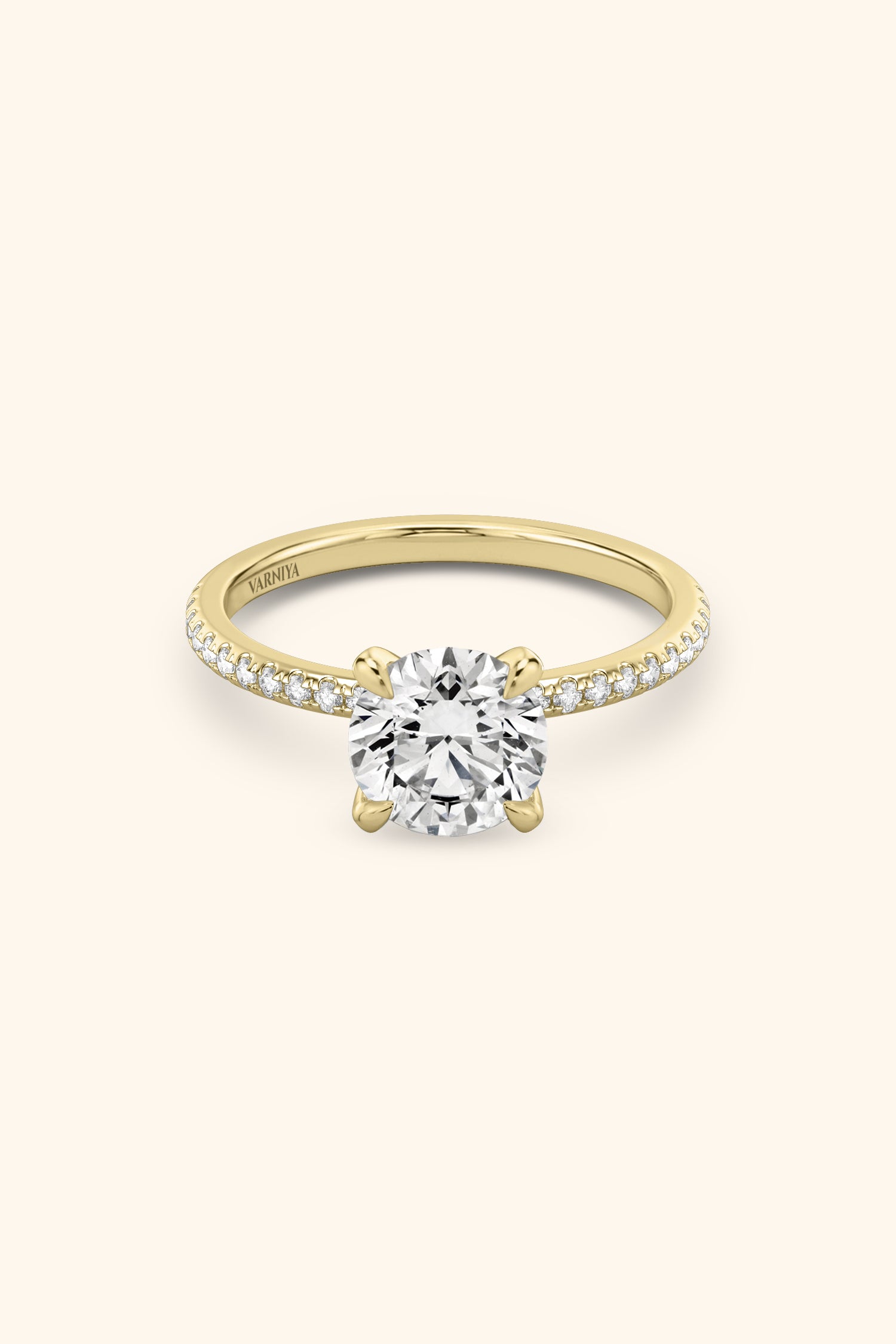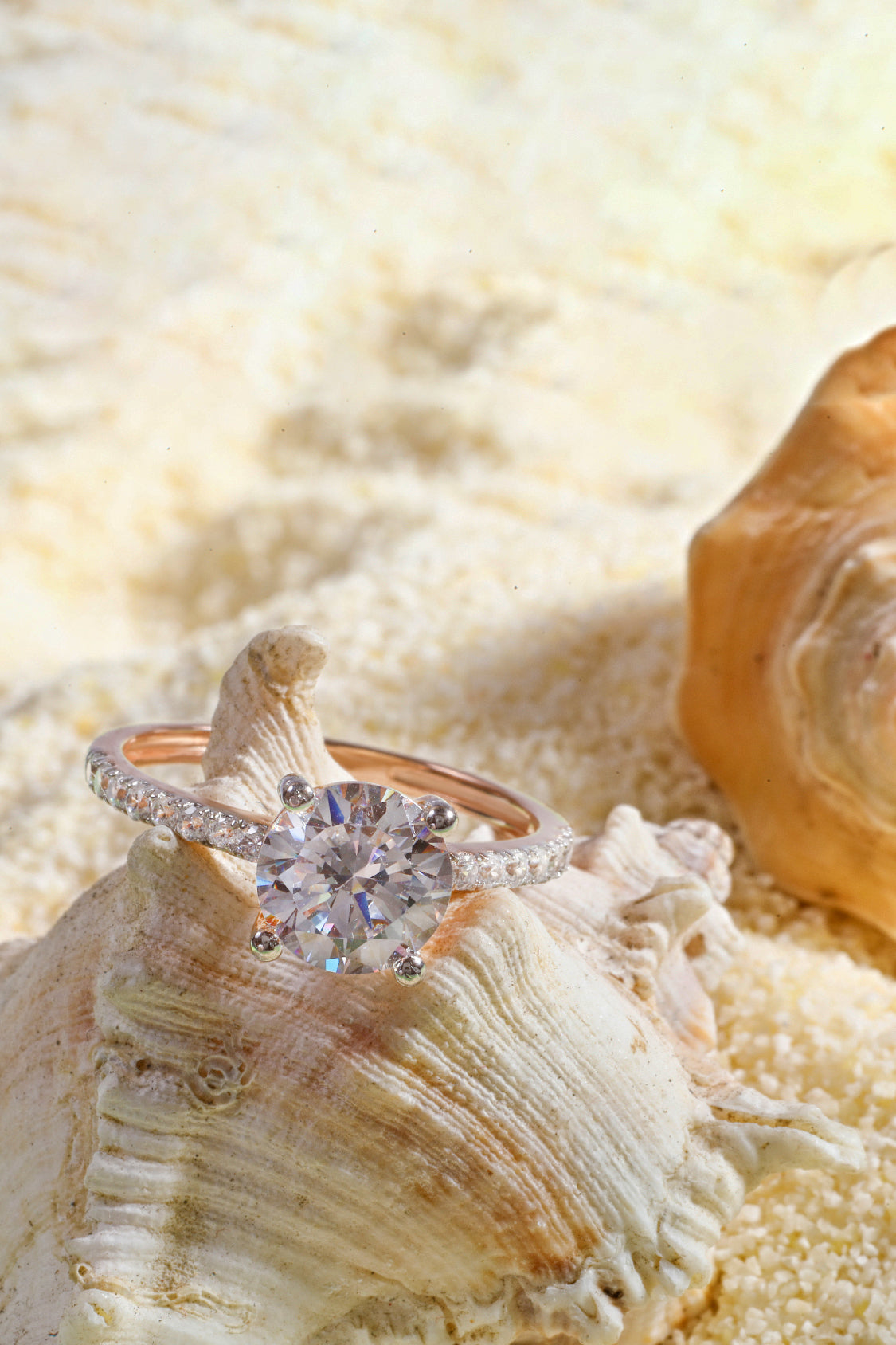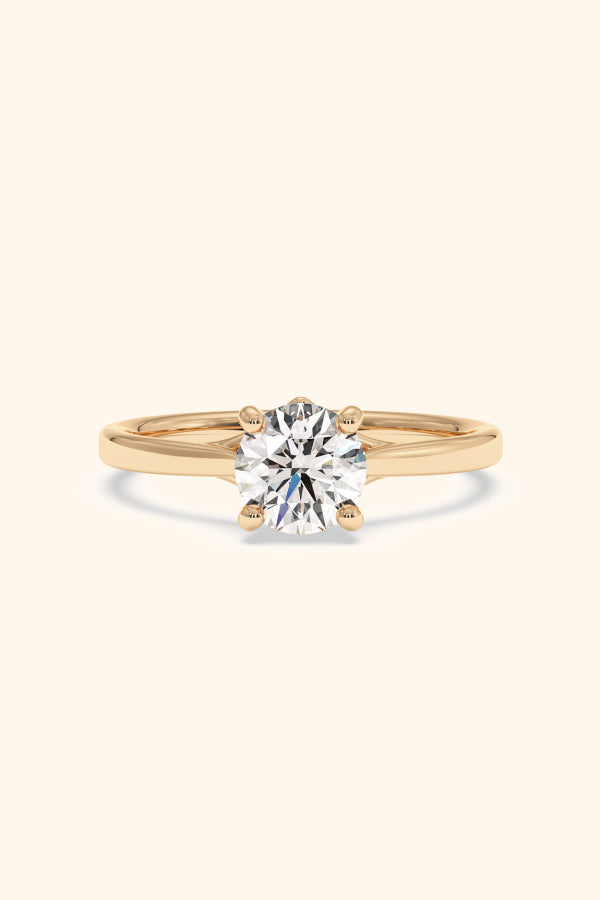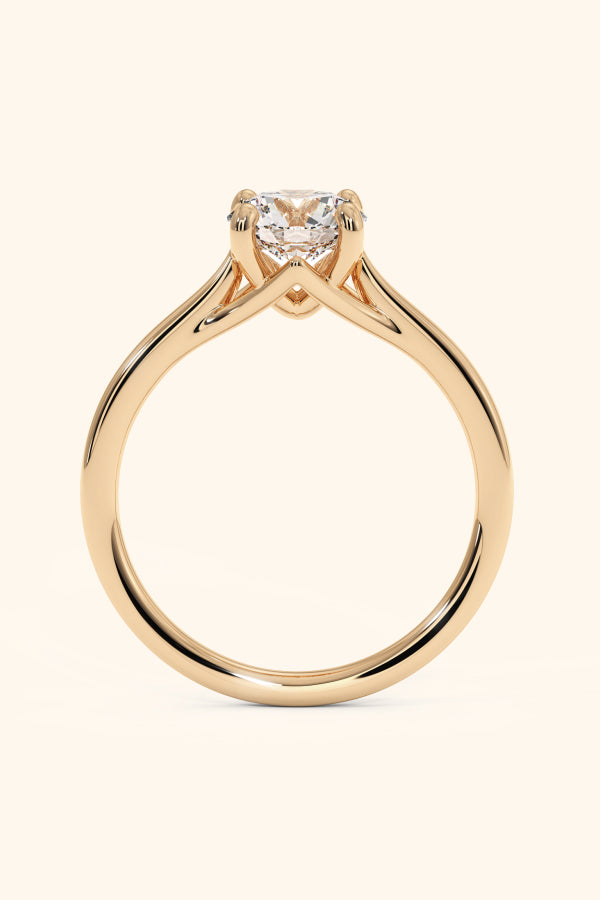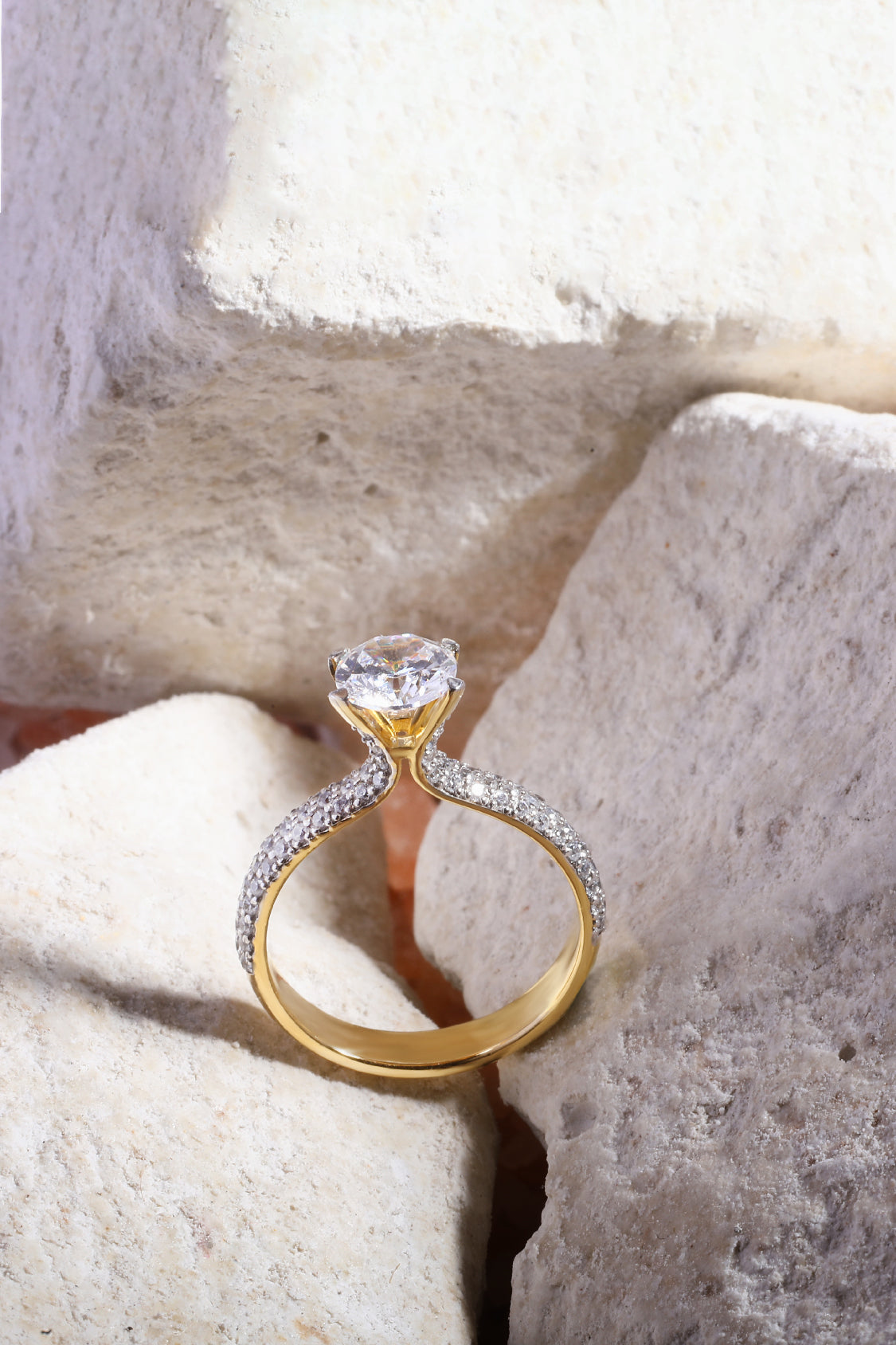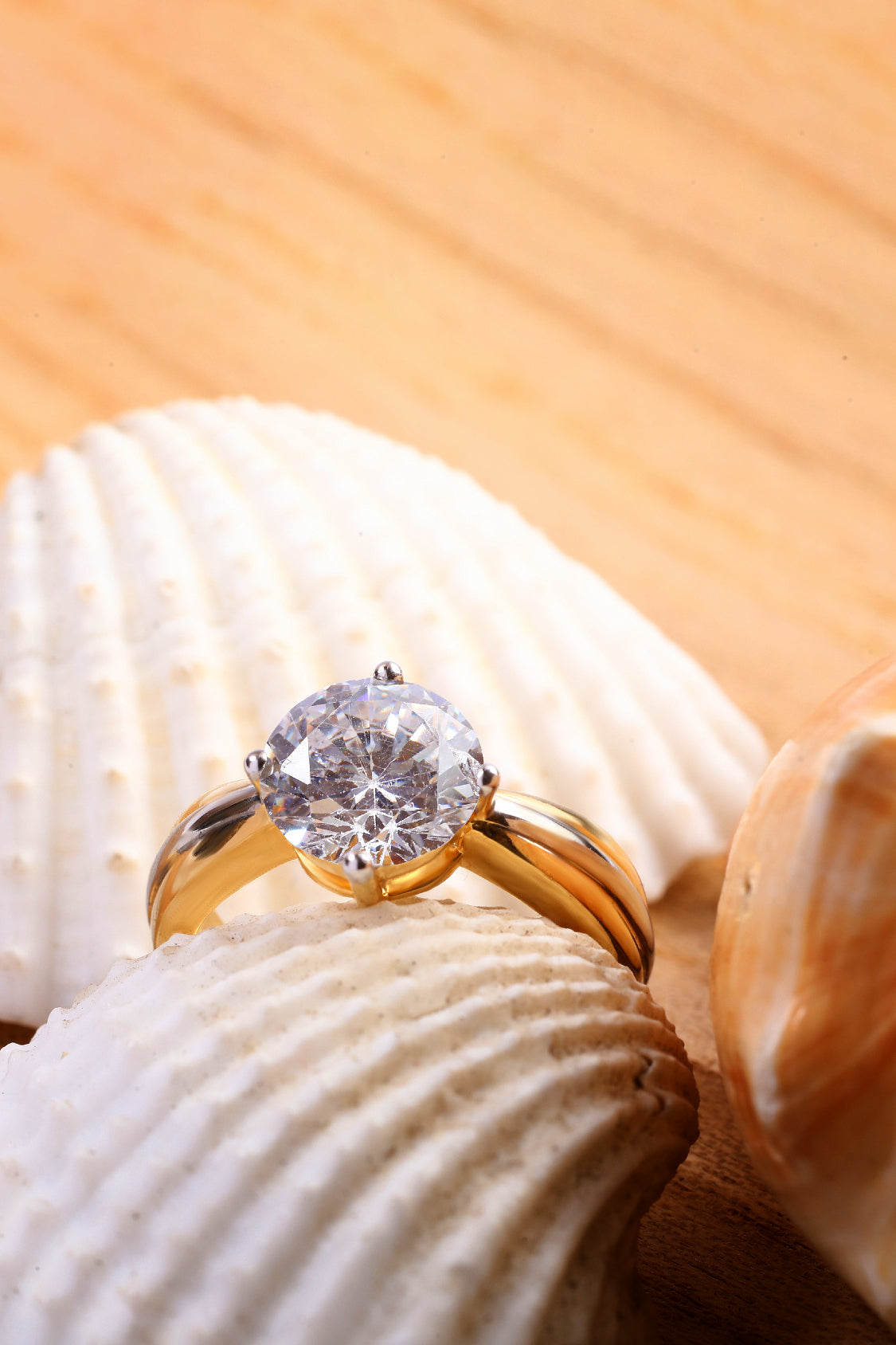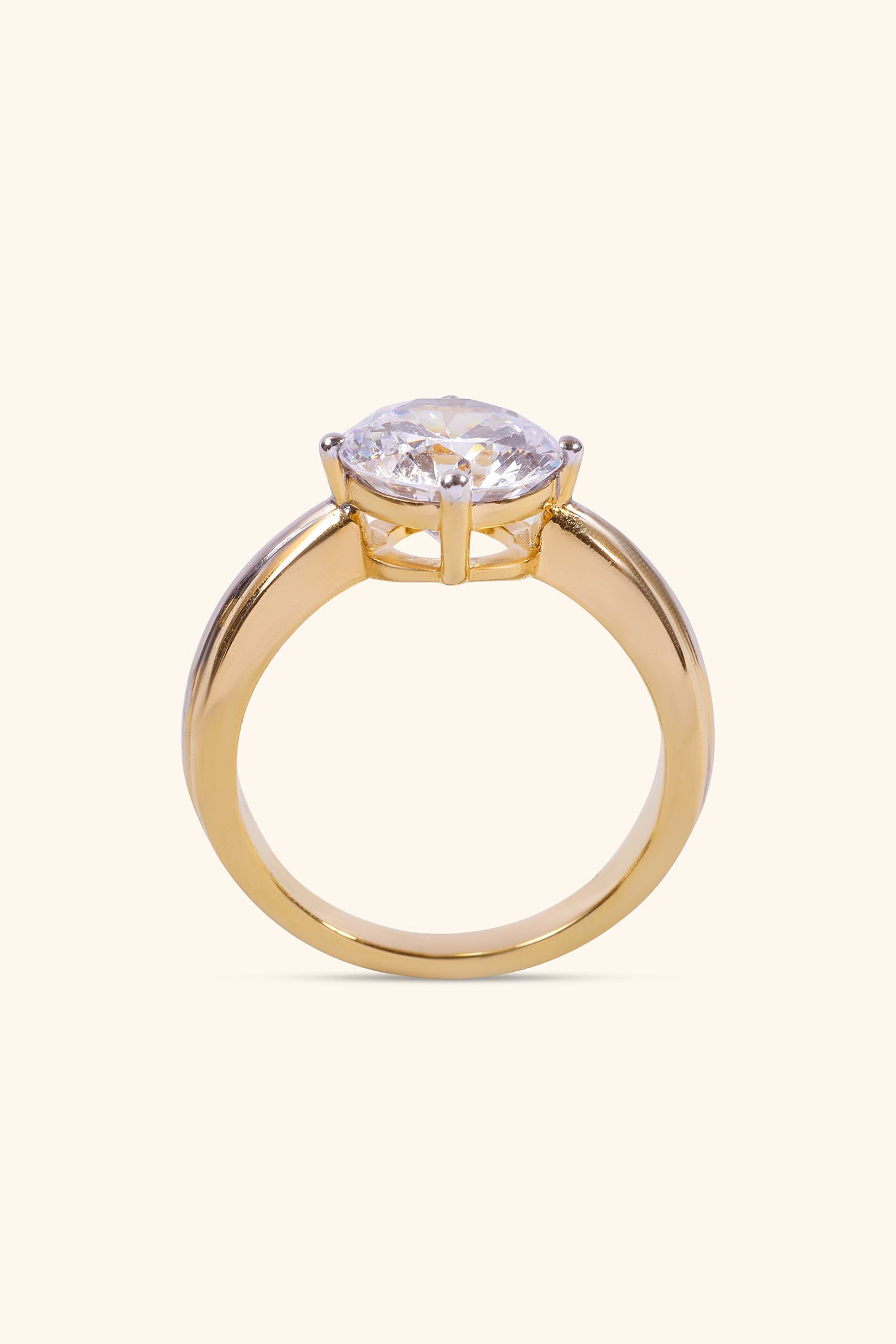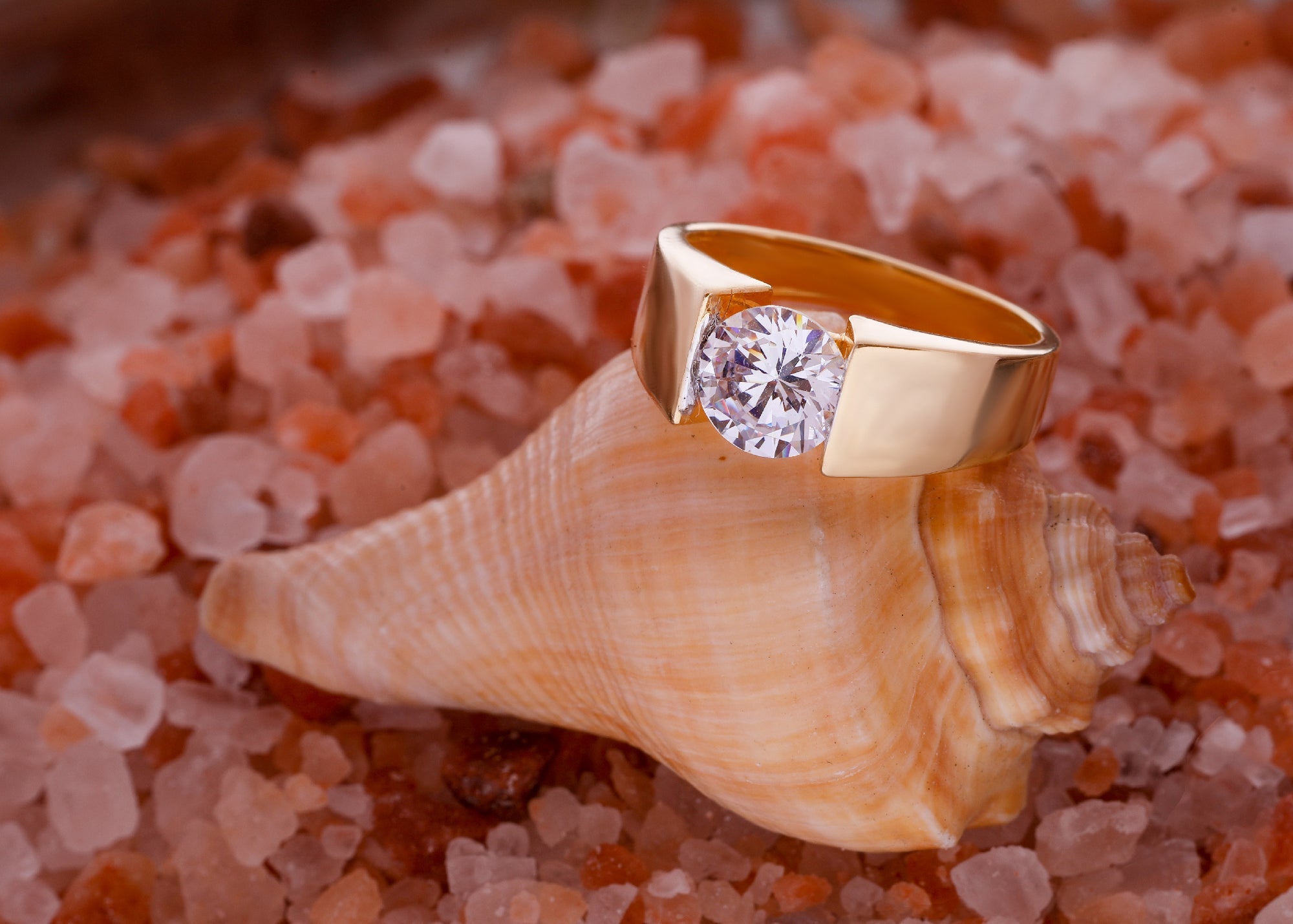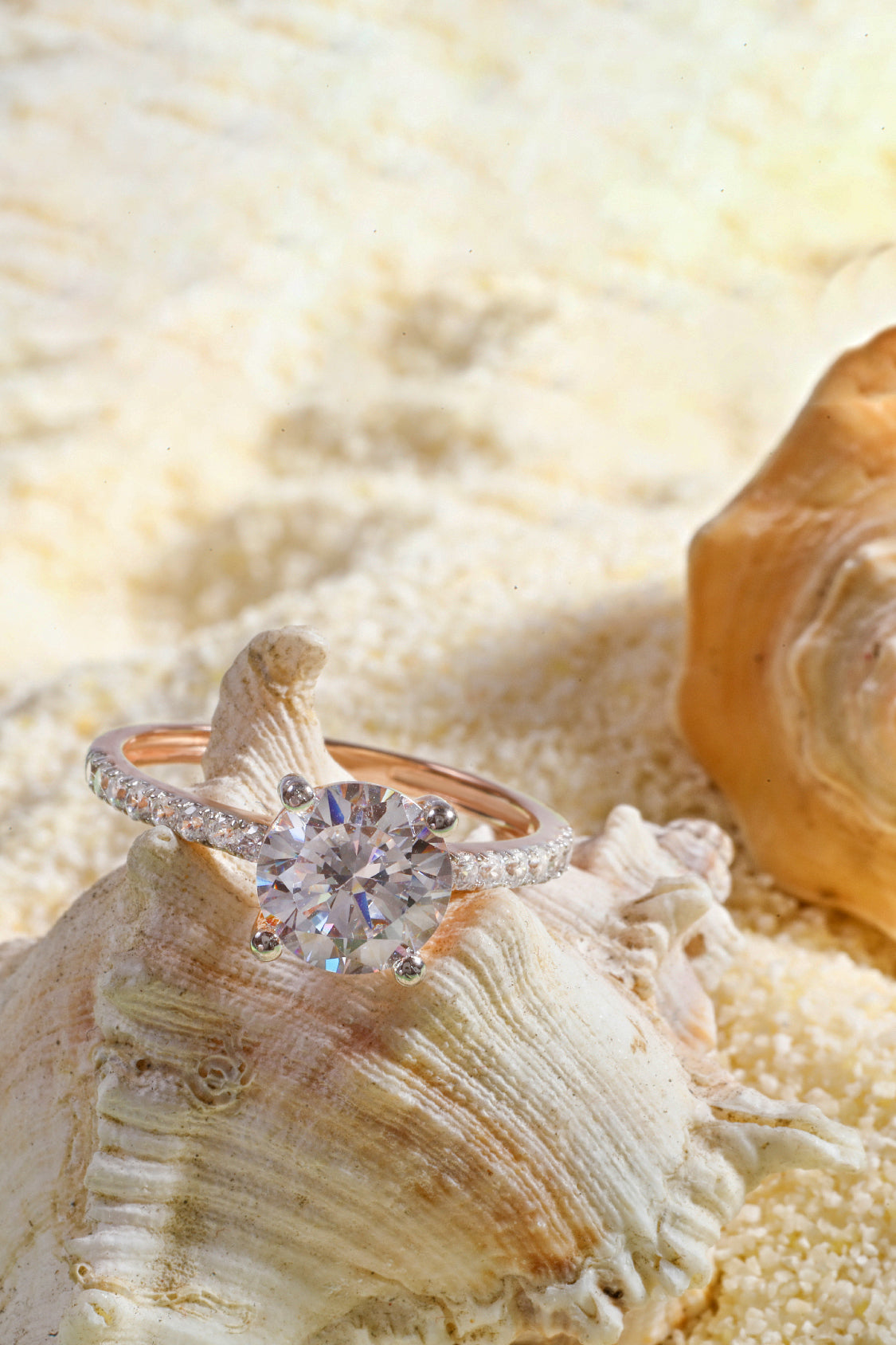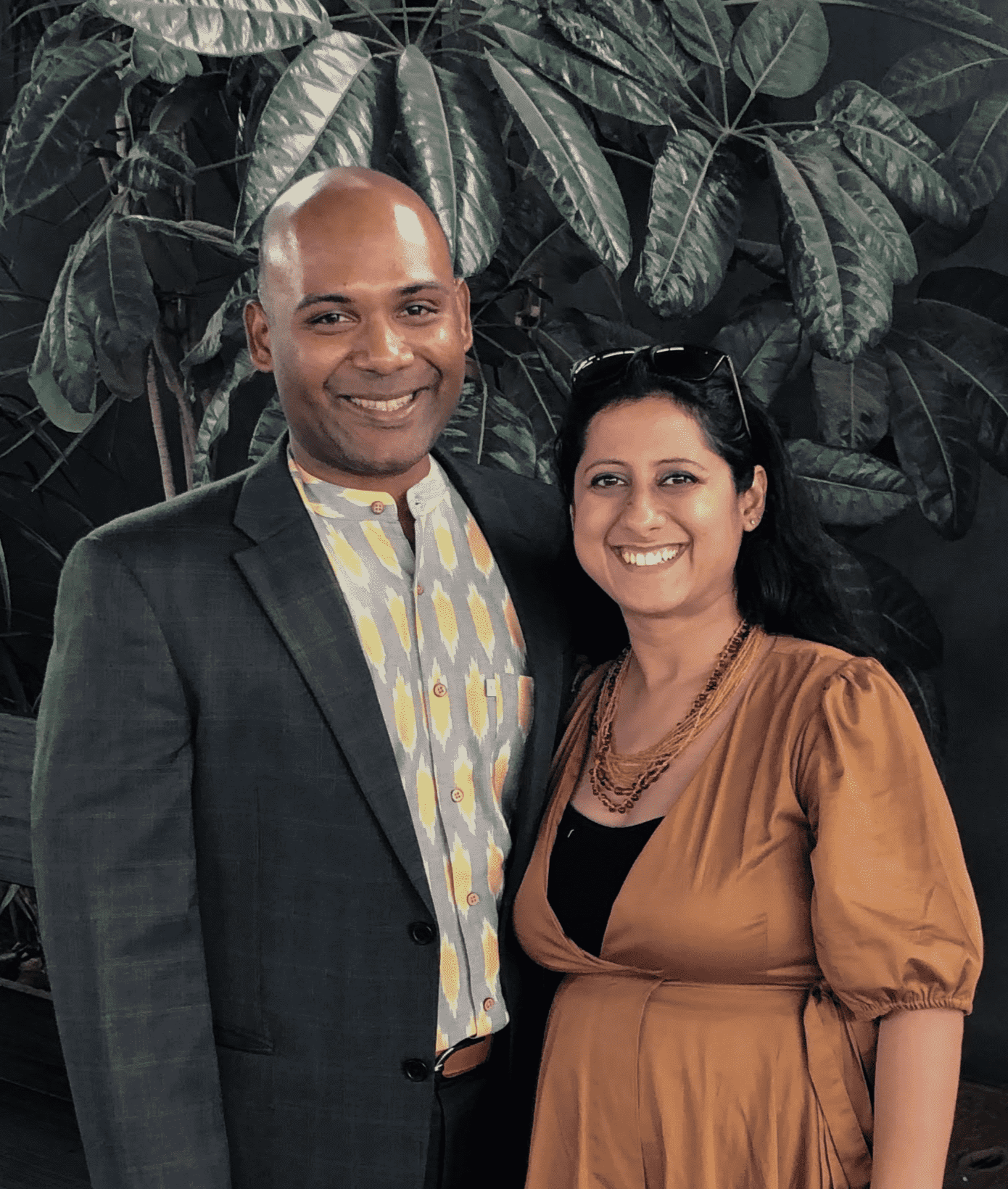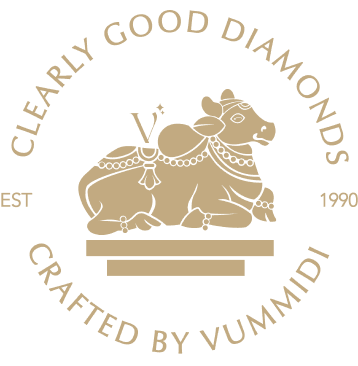
Are Lab-Grown Diamonds Real: Understanding the Myths and Facts
Did someone raise their eyebrows when you said you were going to propose with a beautiful lab-grown diamond ring? Let them question your choices, but you should never let anything dull your sparkle! Though lab-grown diamonds have been doing their rounds for many years, the question of whether they’re real still lingers in the minds of few. Let’s get to the bottom of these doubts and nip them in the bud by radiating the allure of lab-grown diamonds.
A diamond ring or necklace in your jewellery chest is a prized possession. As everyone vies for the best quality diamonds, many brushed off lab-grown diamonds as fake and synthetic when they began circulating in the market. However, their affordable price range makes them a cost-effective choice, retaining their value and authenticity.
We understand that choosing between natural and lab-grown diamonds can be overwhelming. Though lab-grown diamonds are real diamonds widely accepted, sometimes you cannot resist the charm of natural diamonds. Know what you’re getting into before making a hard choice, and it involves busting the myths surrounding lab-grown diamonds. So, get ready to embark on a factual ride and brighten your gems!
What are Lab-Grown Diamonds?
If you think lab-grown diamonds do not match your notions of romance and surprise, you’ll be astonished to find the vast benefits hidden beneath their glow. Let’s see if lab-grown diamonds are as real as they claim to be. But before diving into it, you must know what lab-grown diamonds are and how they’re made.
As the name suggests, lab-grown diamonds are diamonds created in a lab in a controlled environment. Despite being made in a lab, these diamonds boast the same physical, chemical, and optical properties as mined diamonds. This means you can experience the same quality, brilliance, and fire of mined diamonds in lab-grown beauties, giving you the confidence that you're not compromising on quality.
Though their origins and production times differ, lab-grown diamonds have the upper hand due to their ethical and environmental benefits. Natural diamonds take millions of years to form deep inside the earth, and they are then mined, cut, and polished to become the diamonds we see in stores today. On the other hand, lab-grown diamonds are created within weeks inside the lab, significantly reducing the environmental impact and ethical concerns associated with mining.
To truly understand whether lab-grown diamonds are real, let’s take a short trip back in time and learn their origins. The concept of lab-grown diamonds is not a recent development. In fact, attempts to create lab-grown diamonds were made as early as the late 18th century. However, it wasn't until the 1950s that the first recognised lab-grown diamond was created, thanks to the efforts of scientists Howard Tracy Hall and Herbert Strong. This diamond was produced using a high-pressure belt press, a method that is still used today.
The first lab-grown diamonds did not possess gem qualities and were widely used for industrial purposes. The process was also labour-intensive and expensive. However, as technology improved in the subsequent years, the process of creating diamonds also changed, ultimately producing gem-quality lab diamonds. It was not until the 2000s that they became popular and widely used in engagement rings and jewellery.
Bring in a touch of elegance and bind your love with Varniya’s thoughtfully curated lab-grown diamond rings.
How are Lab-Grown Diamonds Made?

Most people doubt whether lab-grown diamonds are real based on how they’re formed. They think natural diamonds' value and quality are lost when made in a lab. However, this is not true. Understanding the methods involved in creating lab-grown diamonds will shed light on the matter. Scientists use two methods, HPHT and CVD, to make lab-grown diamonds. Both are effective in producing high-quality, genuine diamonds similar to those found naturally.
HPHT Method
HPHT, or the High-Pressure, High-Temperature method, focuses on recreating the environment in which natural diamonds are formed in a lab. With advanced technology, scientists build an environment subject to extreme heat and pressure, similar to that seen on the Earth’s crust.
In the HPHT method, a diamond seed (a tiny piece of diamond) is pressed with pure carbon. It is then exposed to extreme heat and pressure, causing the carbon to melt and form a diamond around the seed.
CVD Method
CVD, or the Chemical Vapour Deposition method, is a relatively new method for producing lab-grown diamonds. This method places a diamond seed in a chamber filled with carbon-rich gas. The seed is then put under extremely high temperatures, where the carbon gas ionises and releases free carbon atoms. These particles stick to the seed, forming a complete diamond layer by layer.
Even though there are slight differences between the HPHT and CVD methods, both are known for producing stunning diamonds indistinguishable from their mined counterparts. However, each one has its distinct characteristics and advantages. The HPHT method, for instance, mimics the natural diamond formation process more closely, resulting in diamonds with a slightly higher clarity. On the other hand, the CVD method allows for more control over the diamond's growth, making it easier to produce diamonds with specific characteristics like colour or size.
Researchers are constantly exploring ways to improve production efficiency and develop new technologies in the lab-grown diamond industry. This means that as the industry grows, we can expect to see even more innovative and exciting lab-grown diamond products in the future. Stay tuned as lab-grown diamonds continue to make waves in the market.
Experience how the brilliance, affordability, and beauty blend well by exploring Varniya’s sustainable lab-grown diamond collection.
Debunking Myths About Lab-Grown Diamonds
Our way of thinking is twisted; when someone says something is bad, we blindly believe them without even trying it. That’s the case with lab-grown diamonds as well. If somebody comes and tells you lab-grown diamonds are not real, you do not care to check for facts. So, next time they remark on lab-grown diamonds, be prepared to counter them. Here are the popular myths surrounding lab-grown diamonds, and let’s wield the power of truth and battle the misconceptions.
Myth 1: Lab-grown diamonds are not real diamonds
This is the most commonly misunderstood characteristic of lab-grown diamonds. If you ever wonder, ‘Are lab-grown diamonds real?’ The answer is yes! They’re as real and genuine as natural diamonds because they’re created through the same process as the formation of diamonds under the Earth’s crust. The only difference is in the setting. Though produced in a controlled lab environment, lab-grown diamonds have the same sparkle, brilliance, fire, and quality as mined diamonds.
Myth 2: All lab-grown diamonds are the same
Just because lab-grown diamonds are made in a lab, they are not necessarily the same - it’s not like manufacturing BMW XM! Though they share the basic properties of mined diamonds, lab-grown diamonds differ depending on the creation method and growth conditions. The HPHT and CVD methods and temperature and pressure variations can influence the size, colour, and clarity of lab-grown diamonds. However, each diamond is as unique and beautiful as a snowflake.
Myth 3: Lab-grown diamonds lack value and authenticity
Turn a deaf ear when someone calls lab-grown diamonds fake or imitation diamonds. As lab-grown diamonds are graded based on the 4Cs - cut, colour, clarity, and carat weight, like natural diamonds, you do not have to worry about their value or authenticity. Besides, reputable diamond grading laboratories like IGI, GIA, and AGS certify these diamonds, making them as valuable as their mined counterparts.
Myth 4: Lab-grown diamonds have a negative environmental impact
Lab-grown diamonds are created safely inside a lab using machines and technology, causing less environmental harm. Mining diamonds, on the other hand, leads to the loss of flora and fauna and the destruction of habitats. Most lab-grown diamond companies follow sustainable practices when producing diamonds. They ensure proper waste management and reduce their carbon footprint.
Myth 5: Lab-grown diamonds cannot be used in fine jewellery
Lab-grown diamonds offer the same sparkle and durability as mined diamonds, making them an excellent choice for high-end jewellery. They can be cut and polished to create stunning designs. The leading jewellers are adding lab-grown diamond jewellery to their collections to appeal to eco-conscious customers. Hence, lab-grown diamonds are ideal for those who value ethical practices and love statement designs.
Identifying and Appraising Lab-Grown Diamonds
Now that you know lab-grown diamonds are real, how do you differentiate between the natural and lab-grown? We’ve already seen they share the same properties, and one cannot tell the difference with the naked eye. Does that mean you cannot identify the two? Well, jewellers have a remarkable eye for discerning the difference!
They use high-tech equipment like microscopes and ultraviolet light machines to analyse a diamond's growth patterns and inclusions. These clues will help them determine whether the diamond was formed under the Earth's intense pressure or in a controlled lab environment.
Moreover, trained gemologists have expert knowledge and experience to interpret these patterns and issue a grade report or certification. This certification guarantees the diamond's authenticity and quality, whether mined or lab-grown. But how do they estimate the value of lab-grown diamonds?
The appraisal process is similar for both mined and lab-grown diamonds. Gemologists assess the 4Cs (cut, colour, clarity, and carat weight) to determine the diamond's value. So, whether you buy a natural or lab-grown gem, you can rest assured that a certification and professional appraisal ensure you're getting a sparkling beauty that matches its value.
Choosing Between Lab-Grown and Mined Diamonds
Diamonds offer a dazzling display of brilliance, capturing every heart's whim and fancy. Today, the choice has expanded, with both mined and lab-grown diamonds vying for your attention. But fear not; there's no need to feel limited by the misconception that lab-grown diamonds are somehow less real. Both options hold incredible beauty and value, and the perfect choice depends on what lights your fire!
Here are a few parameters to consider when choosing your diamond:
Stop worrying about whether lab-grown diamonds are real and explore their varied benefits! They’re as real and durable as natural diamonds. Whether it’s the eco-friendly practice or attractive price point that caught your eye, Varniya is here to make your moments even more memorable.
Add a stunning diamond to your jewellery collection, or pop the question with a dazzling lab-grown diamond engagement ring. Visit our website to explore the most exquisite collection of lab-grown diamond jewellery, and get one customised today to your liking!
Frequently Asked Questions
Definitely! Lab-grown diamonds possess the same physical, chemical, and optical properties as mined diamonds. They sparkle, refract light, and have the same hardness and durability. The only difference lies in their origin—one was created in a controlled environment, and the other formed deep within the Earth.
The naked eye cannot distinguish between lab-grown and mined diamonds. However, jewellers and gemologists use advanced tools and technology to analyse a diamond's growth patterns and inclusions and determine its origin.
Like its mined counterpart, the value of a lab-grown diamond depends on the 4Cs: cut, colour, clarity, and carat weight. While the resale market for lab-grown diamonds is still developing, their increasing popularity suggests they may hold their value well over time.
The most significant advantage of lab-grown diamonds is their affordability factor. Moreover, they have minimal environmental impact and follow sustainable practices, making them ideal for eco-conscious customers.
Lab-grown diamonds can hold sentimental value, just like mined diamonds. Their increasing popularity and exceptional quality make them a viable option for heirlooms, especially for those who prioritise ethical sourcing.


